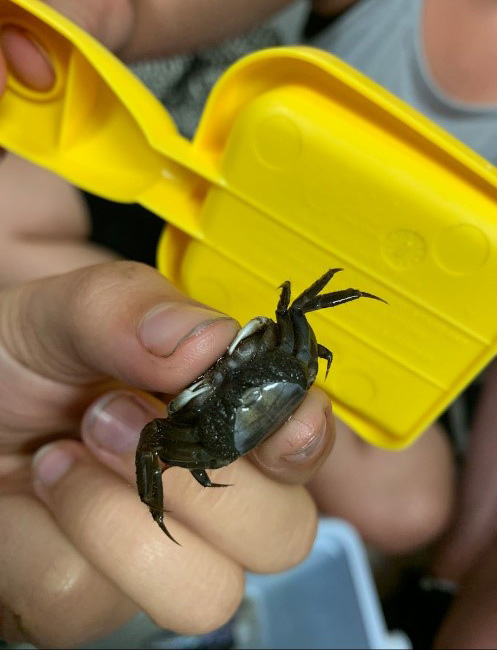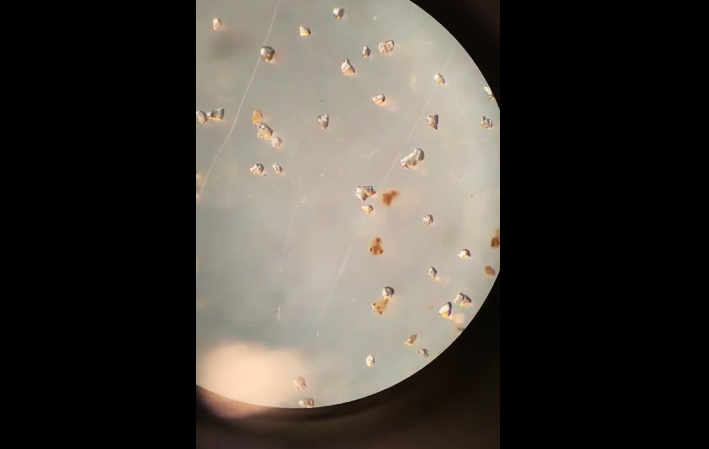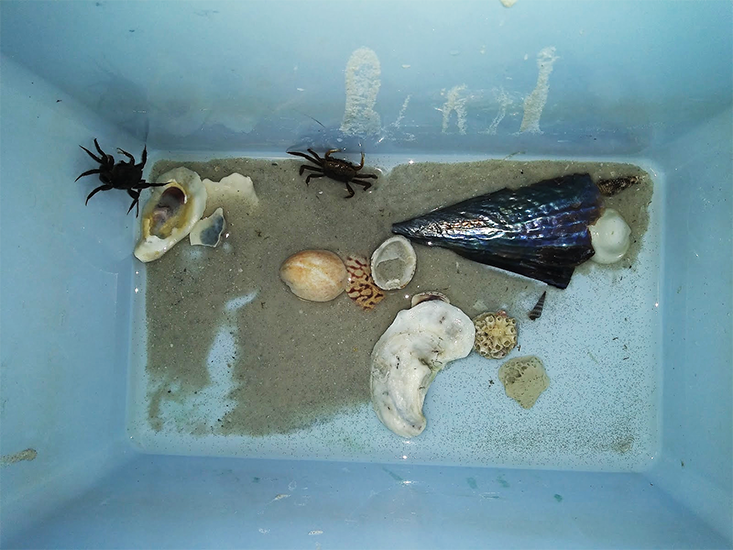Written By: Makenzie Burrows, Breitbart Lab Manager & Outreach Coordinator, USF College of Marine Science
Introduction
I work in Dr. Mya Breitbart’s lab at the USF College of Marine Science. For the past couple summers our lab has done outreach activities with Girls Inc. of Pinellas, an organization that inspires young girls to be strong, smart, and bold through afterschool programs and summer camps.
I decided to work with Girls Inc. because I identify with their values and want to help young girls grow. This summer I’m taking a crack at developing a 10-week science program for middle school-aged girls, focusing on living things in Tampa Bay.
Last week we took a closer look at invertebrates in Tampa Bay. I brought an intern from our lab out to Fort De Soto to help me collect some samples – and we couldn’t believe what happened next.
Zealous Zoea: a Zany Zurprise
It started out as a fun day at the beach searching for invertebrates as we waded through marshes, keeping our eyes peeled for any living thing. The first invertebrate we found was a crown conch, about the size of a quarter. I expected to find them here because of their low salinity tolerance, but our main goal was to find a more charismatic invertebrate to show the kids at Girls Inc.
We decided to move to the sandy beach to look for shells and there it was, a fiddler crab. I knew they were quick-movers, so I squatted down and picked it up as quickly as possible. BOOM… mission accomplished! It was a female, so the claws were small, making it easy for the kids to hold. After my adrenaline wore off, I was a little suspicious at this crab’s location. Fiddler crabs typically hang out near mangroves or in holes to avoid predation, but this one was out in the open. A little strange.

Pregnant fiddler crab. Fiddler crabs hold their eggs on the underside of their bodies until spawning. Photo by: Natalia Lopez
I decided to keep going and continue our search. After grabbing a couple good examples
of bivalves, we ran into a couple kids that had trapped yet another female fiddler
crab. They kindly let us take it for our activity. Time to head back to the lab!
We were so excited to show the rest of the lab what we found, so we went straight up the elevator. As soon as we did our little show and tell, we realized something was different in the fiddler crab tank:
They had given birth to hundreds of babies!
Fiddler crabs carry their eggs under the front side of their body for a couple of weeks before releasing their eggs into the outgoing tide. We must have captured these crabs right before their egg release, because they were beginning to spawn right in our lab. One of us realized that all the little specs in our tank were crab larvae, or zoea. As microbiologist, we decided to take a little sample of the water and put it under the microscope, and there they were: beautiful little zoea swimming around.
The plan for taking these crabs to the outreach activity had changed drastically. Instead of keeping the crabs overnight, we decided to release them back into the water so they could continue spawning the rest of their offspring in peace.
Although we didn’t have the crabs to show the girls the next day, we had a great story to tell.

Crab zoea under light microscope. The white crystals are pieces of sand. Photo by: Natalia Lopez
